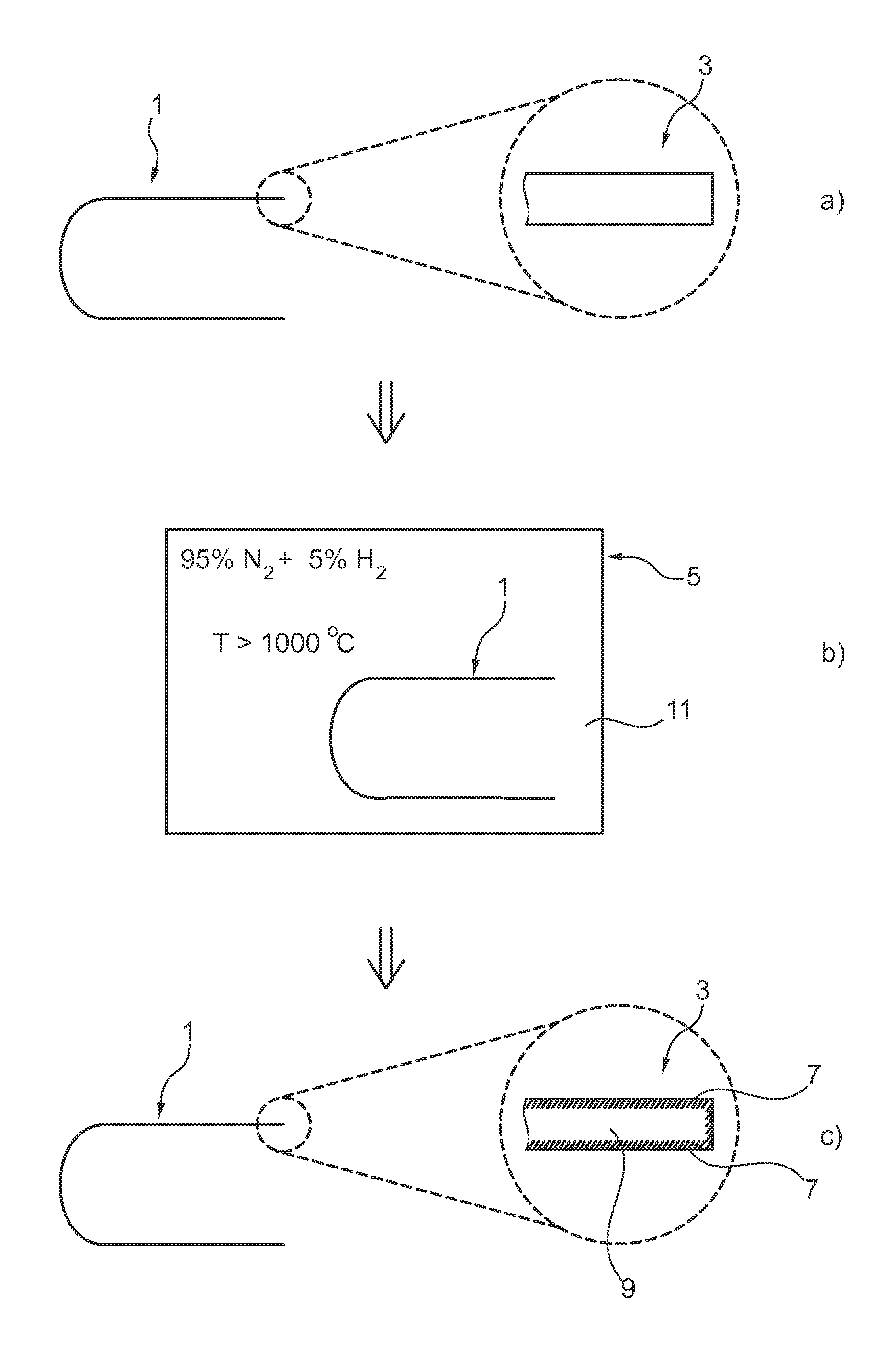Method of treating a surface layer of a device consisting of alumina and respective device, particularly x-ray tube component
a surface layer and alumina technology, applied in the direction of lighting and heating apparatus, charge manipulation, furnaces, etc., can solve the problems of insufficient properties of the deposited layer, deflection of electron beam and electrical breakdown, and similar problems of isolators, etc., to achieve the effect of reducing the resistivity gradient and being easy to adop
- Summary
- Abstract
- Description
- Claims
- Application Information
AI Technical Summary
Benefits of technology
Problems solved by technology
Method used
Image
Examples
Embodiment Construction
[0030]The method for treating a surface layer of a device consisting of alumina and the resulting device in accordance with an embodiment of the present invention shall be described with reference to FIG. 1.
[0031]A device 1 may have any suitable shape such as a tube, a cylinder, a slab, a bowl, etc and is provided with the surface layer 3 being exposed (FIG. 1(a)). The entire device or at least the surface layer 3 consists of alumina. The device is a component of an x-ray tube or an electron beam device which, at least partly faces an electron beam.
[0032]The device 1 is then placed into an oven 5 (FIG. 1(b)). The oven 5 is filled with an oxygen-depleted atmosphere 11 comprising 95% of nitrogen and 5% at hydrogen. Alternatively, the oven 5 may be filled with argon. The oxygen-depleted atmosphere 11 is heated to an elevated temperature of more than 1700° C. and the device 1 is kept within the oven 5 at this elevated temperature for more than 2 hours.
[0033]After such treatment (FIG. 1(...
PUM
| Property | Measurement | Unit |
|---|---|---|
| temperature | aaaaa | aaaaa |
| temperature | aaaaa | aaaaa |
| pressure | aaaaa | aaaaa |
Abstract
Description
Claims
Application Information
 Login to View More
Login to View More - R&D
- Intellectual Property
- Life Sciences
- Materials
- Tech Scout
- Unparalleled Data Quality
- Higher Quality Content
- 60% Fewer Hallucinations
Browse by: Latest US Patents, China's latest patents, Technical Efficacy Thesaurus, Application Domain, Technology Topic, Popular Technical Reports.
© 2025 PatSnap. All rights reserved.Legal|Privacy policy|Modern Slavery Act Transparency Statement|Sitemap|About US| Contact US: help@patsnap.com



